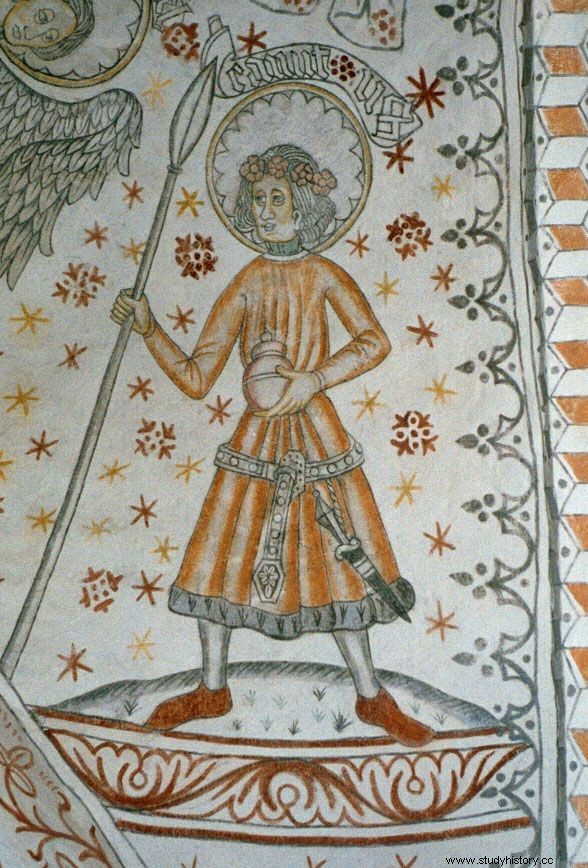Half of today's Germany belonged to the Slavs a thousand years ago. Today there is almost no trace of them there. This was due to a series of mishaps. Here are the top 5 of them. As a warning.
5. The hunter becomes the game
In 955, the coalition of the Lutykos and Obodrites (the two largest tribal unions in the Połabie) stopped the march of Emperor Otto I's troops on the Rzekienica River (Raxa). The Germans, stuck on a muddy shore, have a cut-off retreat. They are forced to cope with hunger and disease. The specter of a disgraceful defeat is before the eyes of the elected German army.
The Slavic leader Stojgniew holds them in his hand. A distraught Otto I tries a desperate maneuver:one unit feigns an attack, while the other runs towards the ford on the inside of a bend in the river. The Slavs are guarding the other shore, of course, but their unit reacts too slowly. An unexpected twist occurs. The united Slavic forces, sure of their victories so far, hit the iron pincers in an instant.

Otto I could go to Stojgniew, as he had just defeated the Magyars on the Lech River (the battle in Lechowy Pole on the illustration of Hector Mülich from 1457, source:public domain).
Stojgniew is killed, his adviser is cruelly mutilated; the next day, to sow terror, the Germans murder 700 Slavic prisoners. Until 963 there are several smaller expeditions, after which the resistance of the Slavs is broken for a long time. Serbo-Lusatians forever.
4. Victory that is a Failure
On September 10, 1056, the opposite seems to be the case. The Slavs of the Lutycki League achieve a decisive military victory. The huge Saxon army is smashed into dust near Przęcława .
The defeat is so severe that hearing of it, Emperor Henry III dies of grief. The road to domination in the region opens up for the Lutyk family. Victory, however, does not give strength to the Slavs. There are fierce disputes between the tribes that make up the union.
Czrezpienianie and Chyczanie are against the Redars who have played the leading role so far. The Redars, defeated three times, summon the enemy Danes and Obodrzyca for help. Czrezpienianie and Chyczanie become dependent on their neighbors. The Lutyce Union, before which all of Germany trembled not long ago, is falling apart.

The almost 40-year-old Emperor Henry III gave up his ghost on the news of the defeat at the hands of the Velets. Now it rests under that sarcophagus in Speyer (source:public domain).
3. Democratic abandonment of triumph
Fortuna decides to smile again at Lutyki. In 1073, the Saxons rose against King Henry IV. Both sides of the conflict reach out to Redary and Tolężany, that is, the remnants of the broken Lutheran Union, so that they can return to the game for the highest stakes and stand on their side.
To take advantage of the circumstances and plunder rich Saxony with impunity, or to take away the profits that will flow from opening the way to power by the Sasians? To go back to the waters of great politics or to take care of your own affairs only? The participants of the Lucite rally cannot make up their minds. After all, they choose the worst option of all - neutrality . They voluntarily give up the chance to return to the group of playmakers. This time finally.
2. Death suddenly
In 1093, Henryk Gotszalkowic murdered the ruler of Obodrzyc to take his place himself. Under his leadership, the Obodrzyckie state significantly expands its territory. There are many people willing to grab a piece of this cake. Nevertheless, the "king of the Slavs and Nordalbings," a Christian ruler in a pagan country, is unable to predict that the same things as his predecessors could happen to him. He doesn't bother to sort out succession matters.

Canute Laward of Denmark ruled the Obodrites only by the emperor's will (painting from Vigersted in Denmark, source:public domain).
When Henry is murdered in 1127, his sons were killed quickly in the struggle for power. The family is expiring. The next ruler, Canute Laward, is imposed by the emperor and rules a much more modest area.
Soon he is also murdered and the country breaks into two parts. However, this is not the end of the downhill ride. The decay continues and soon there will be no trace of the Obodrzyce family…
1. Children's play destroys the Arkona
After all these turmoil, there is only one independent part of the Elbe - the island of Rügen. The country of Rugian is developing better or worse, but still copes with subsequent invasions of enemies. Resist the expedition of the Danish king Waldemar I together with the Saxons and Pomeranians in 1168, this is not a first for islanders!
The main city, Arkona, is well protected by a high embankment and does not give access to invaders. The only thing left for them to camp and spend time in slacks. The defenders are completely confident - they know they have supplies and that the Danes will be forced to go home with nothing.

Destruction of Arkona - Danish Bishop Absalom destroys the statue of Saint-Vincent (19th-century painting by Laurits Tuxen, source:public domain).
Nobody in this situation pays attention to children's games. Meanwhile, they venture into the vicinity of the castle gate and ... light a fire there. The gate is on fire, the banners of Świętowit are burning, and after a while the ruins collapse. The city becomes open. Surprised "winners" rush inside and arrange their cleanup in Arkona. The last pagan stronghold is falling.
